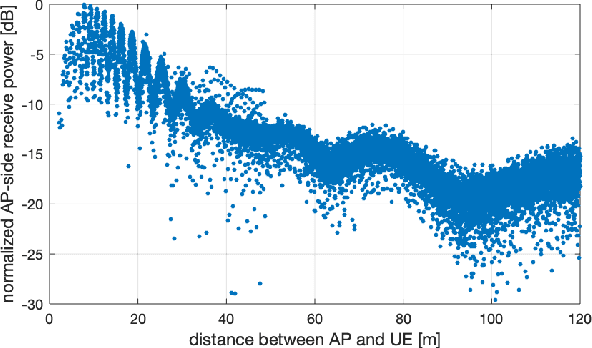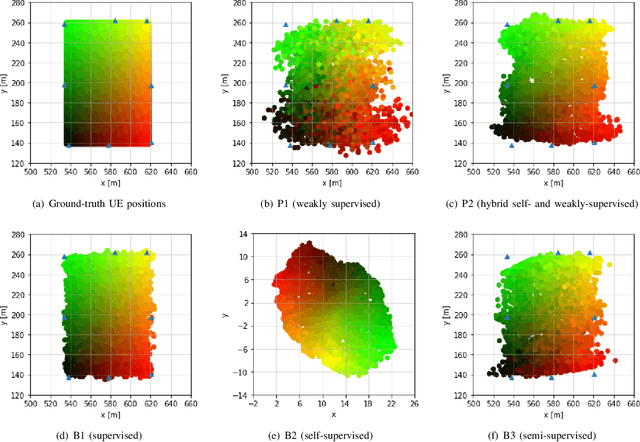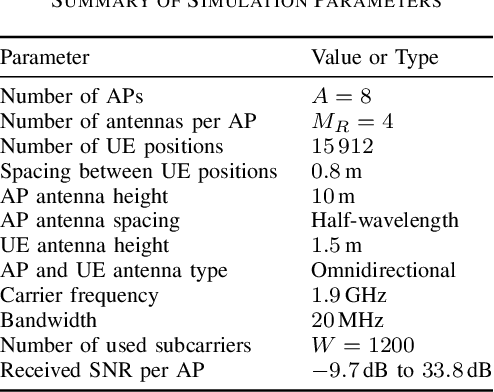Channel Charting in Real-World Coordinates
Paper and Code
Aug 28, 2023



Channel charting is an emerging self-supervised method that maps channel state information (CSI) to a low-dimensional latent space, which represents pseudo-positions of user equipments (UEs). While this latent space preserves local geometry, i.e., nearby UEs are nearby in latent space, the pseudo-positions are in arbitrary coordinates and global geometry is not preserved. In order to enable channel charting in real-world coordinates, we propose a novel bilateration loss for multipoint wireless systems in which only the access point (AP) locations are known--no geometrical models or ground-truth UE position information is required. The idea behind this bilateration loss is to compare the received power at pairs of APs in order to determine whether a UE should be placed closer to one AP or the other in latent space. We demonstrate the efficacy of our method using channel vectors from a commercial ray-tracer.
 Add to Chrome
Add to Chrome Add to Firefox
Add to Firefox Add to Edge
Add to Edge